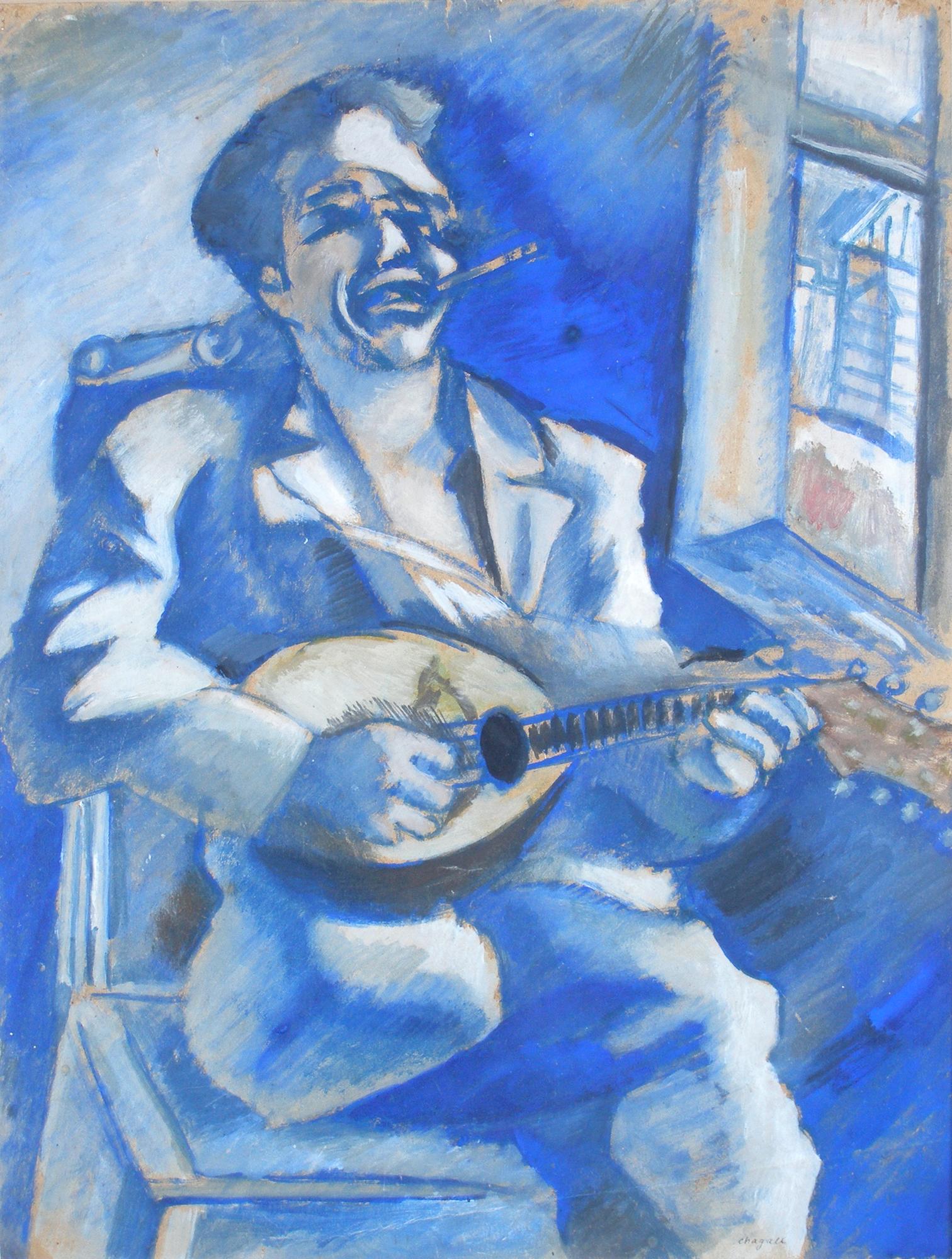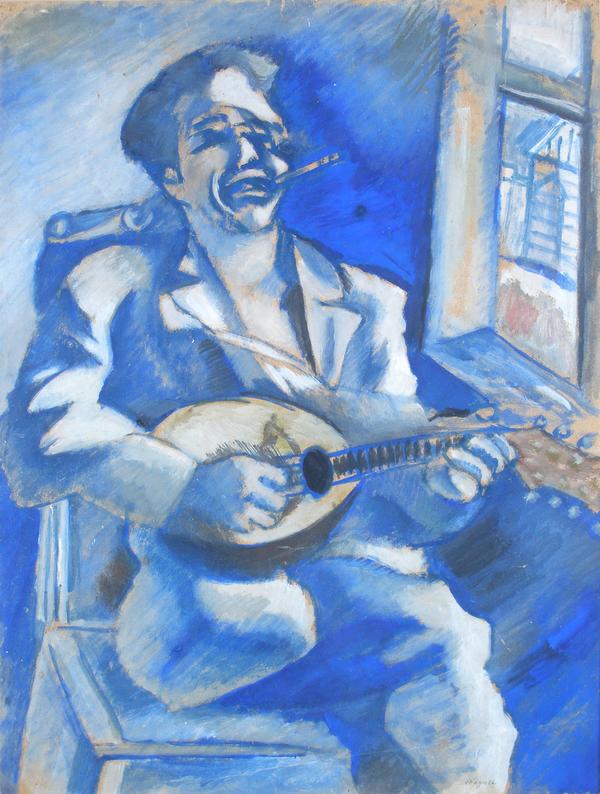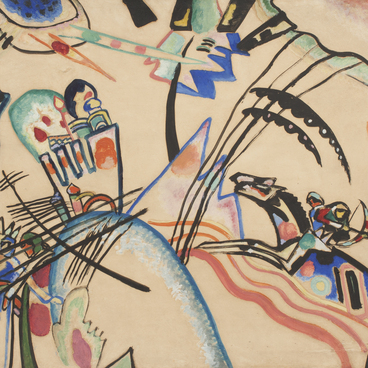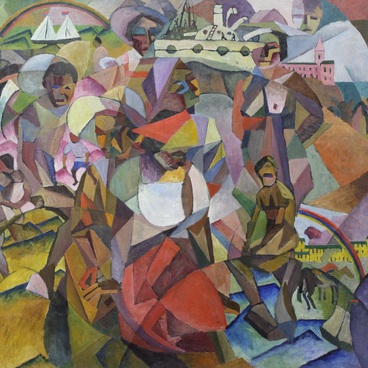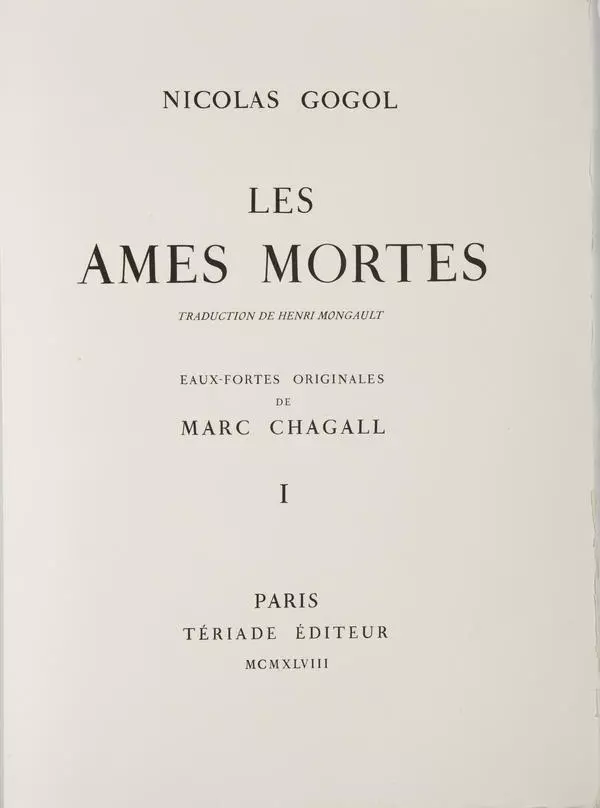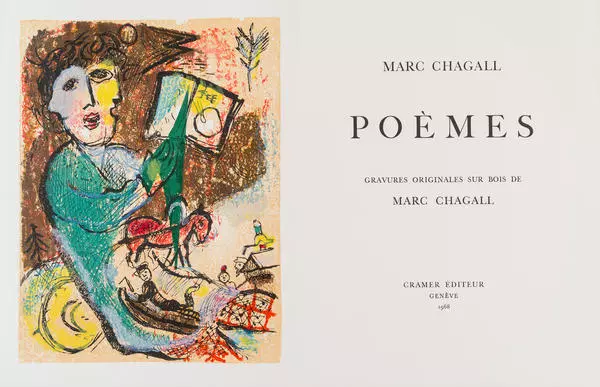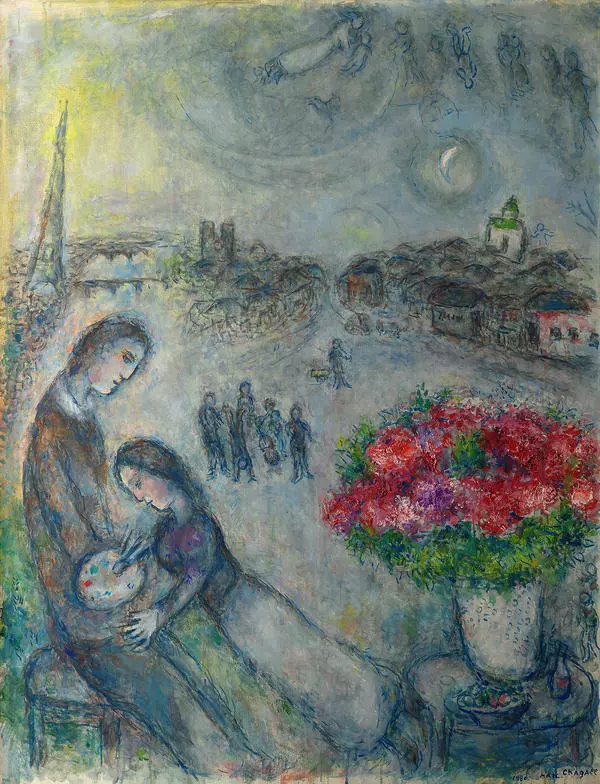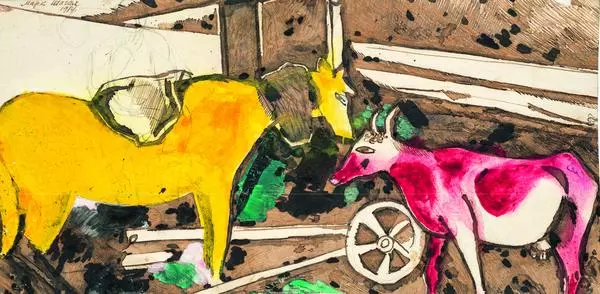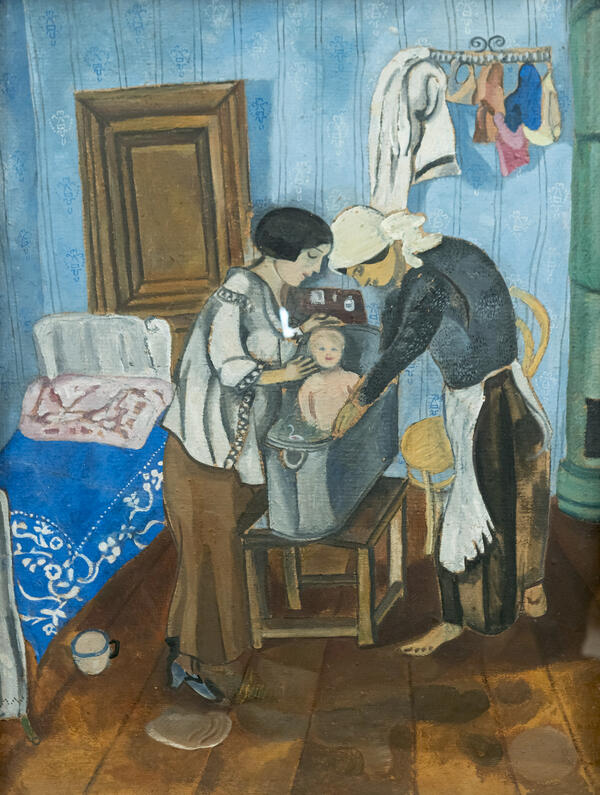Marc Chagall was born in 1887 in Vitebsk. This provincial city always occupied an important place both in the artist’s soul and in his work. Even his beloved Paris was called by Chagall “the second Vitebsk”.
The artist spent most of his life in France. It was there that he got acquainted with Cubism, which, combined with Primitivism and Expressionism, formed the basis of his unique creative method. For almost eight decades, Marc Chagall have been creating in his works a unique world that grotesquely entwined biblical and folklore legends, fairy tale and classical circus characters, streets of real cities and fantastic places from the artist’s dreams.
‘My art does not intellectualize, it is the molten lead itself, the azure of the soul poured onto the canvas. Down with Naturalism, Impressionism and Cubo-Realism! They are boring and disgusting to me’, wrote Chagall in his autobiographical novel My Life.
In the 1910-1920s, the main theme of Chagall’s art was his hometown. In Vitebsk he experienced the hardships of both the First World War and the Revolution. During that period, the artist, according to his own words, created works-documents: he painted more than 70 portraits, landscapes and genre scenes based on his own impressions of the city.
The artist spent most of his life in France. It was there that he got acquainted with Cubism, which, combined with Primitivism and Expressionism, formed the basis of his unique creative method. For almost eight decades, Marc Chagall have been creating in his works a unique world that grotesquely entwined biblical and folklore legends, fairy tale and classical circus characters, streets of real cities and fantastic places from the artist’s dreams.
‘My art does not intellectualize, it is the molten lead itself, the azure of the soul poured onto the canvas. Down with Naturalism, Impressionism and Cubo-Realism! They are boring and disgusting to me’, wrote Chagall in his autobiographical novel My Life.
In the 1910-1920s, the main theme of Chagall’s art was his hometown. In Vitebsk he experienced the hardships of both the First World War and the Revolution. During that period, the artist, according to his own words, created works-documents: he painted more than 70 portraits, landscapes and genre scenes based on his own impressions of the city.
